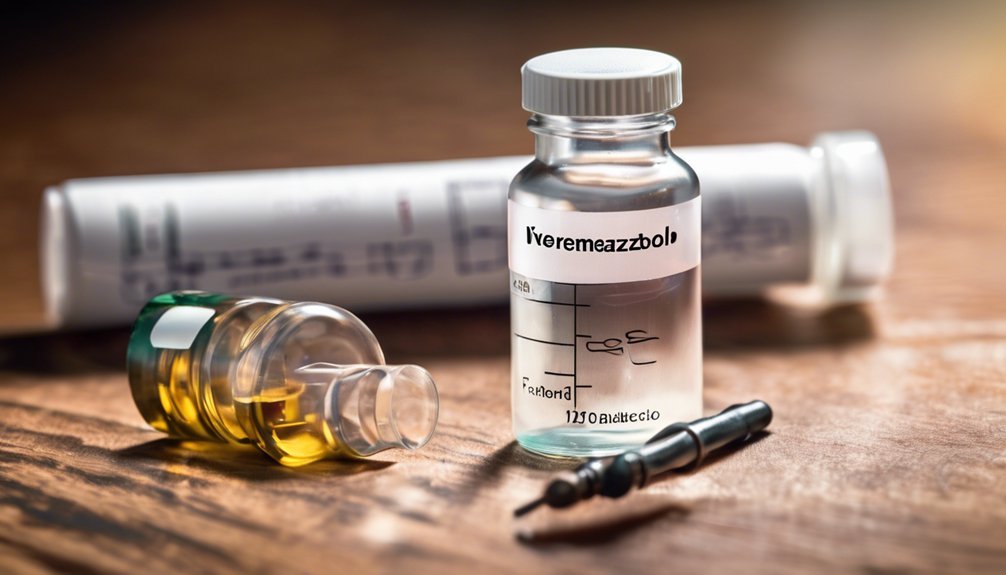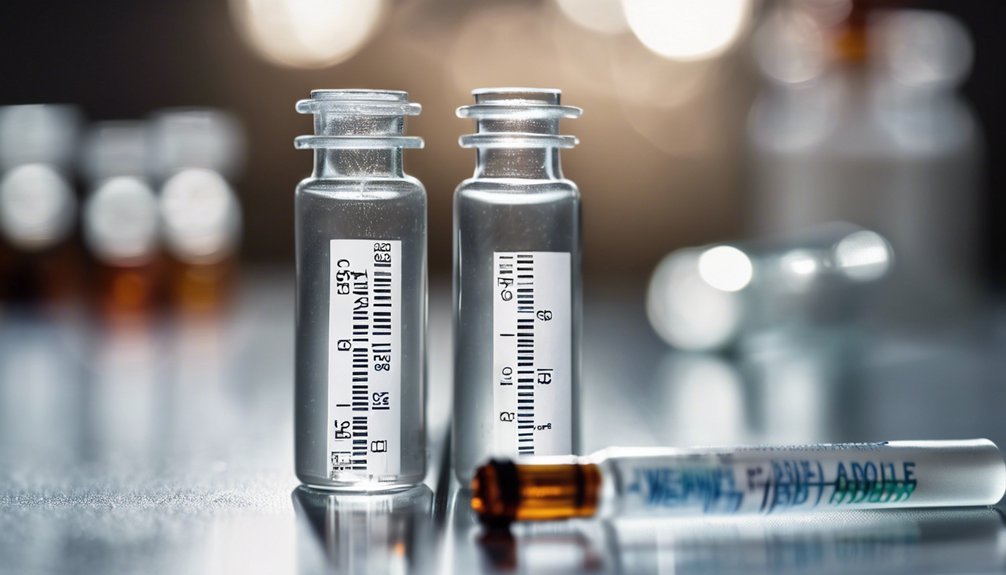Drug repurposing is reshaping the landscape of treatment options, particularly with Ivermectin and Fenbendazole at the forefront. These drugs, initially designed for parasitic infections, are now being evaluated for their wider therapeutic potential. This shift raises important questions about their efficacy in oncology and beyond. As regulatory frameworks adapt, understanding the implications for patient access and health equity becomes vital. What specific opportunities and challenges lie ahead for these repurposed therapies?
Key Takeaways
- Ivermectin and fenbendazole are being explored for diverse applications, including oncology and viral infections, showcasing their potential beyond original indications.
- Both drugs benefit from established safety profiles, facilitating faster repurposing processes compared to developing new medications from scratch.
- Ongoing clinical trials are essential to assess the efficacy of fenbendazole in cancer treatment and other emerging therapeutic areas.
- Regulatory frameworks like FDA’s 505(b)(2) can expedite the approval process for repurposed drugs, addressing public health needs swiftly.
- Collaborative efforts among researchers and healthcare professionals enhance the exploration and deployment of repurposed therapies, improving health outcomes globally.
Understanding Drug Repurposing

Drug repurposing, also known as drug repositioning, involves taking existing medications and exploring their potential to treat different diseases than those for which they were originally developed. This strategy accelerates drug discovery by leveraging established safety profiles, thereby facilitating quicker regulatory approval.
You’ll find that pharmaceutical innovation is significantly enhanced through repurposing, as it maximizes the value of existing therapies while minimizing research costs and timelines. By focusing on drugs already on the market, you can address unmet medical needs and provide effective treatments for various conditions.
Additionally, this approach encourages collaboration among researchers, pharmaceutical companies, and healthcare professionals, fostering a community dedicated to improving patient outcomes and enhancing global health initiatives.
The Importance of Drug Repurposing in Public Health
Repurposing existing medications plays a vital role in enhancing public health outcomes. By identifying new uses for established drugs, you can significantly reduce the time and cost associated with bringing effective treatments to patients.
This approach improves drug accessibility, especially in resource-limited settings where developing new medications may not be feasible. Furthermore, repurposing can expedite responses to emerging health crises, as seen during the COVID-19 pandemic.
Leveraging existing therapeutic profiles allows for quicker deployment of interventions, which can save lives. Ultimately, embracing drug repurposing in public health strategies not only fosters innovation but also ensures that you’re maximizing the potential of available resources, leading to improved health equity and access for all populations.
Overview of Ivermectin: Original Uses and Mechanism
Ivermectin, a broad-spectrum antiparasitic agent, was initially developed for veterinary use before being approved for human applications in the late 1980s.
Its history highlights a significant breakthrough in treating various parasitic infections, including onchocerciasis and lymphatic filariasis. The drug’s mechanism involves binding to glutamate-gated chloride channels in invertebrates, leading to paralysis and death of the parasites.
Additionally, it targets other ion channels, enhancing its antiparasitic effects. In terms of ivermectin applications, it’s utilized not only for treating parasitic diseases but also in veterinary medicine for a range of infestations.
Understanding its foundational uses and mechanisms provides a crucial context for exploring potential repurposing opportunities in future treatments and public health strategies.
Exploring Ivermectin’s Potential Beyond Parasitic Infections

While primarily recognized for its antiparasitic properties, research has increasingly suggested that ivermectin may hold promise in combating a variety of other diseases. Emerging studies indicate its potential efficacy against viral infections, inflammatory conditions, and even some cancers, positioning it as a noteworthy candidate for alternative treatments.
Investigations into its mechanisms reveal that ivermectin might modulate immune responses and inhibit viral replication, offering pathways for innovative therapeutic applications. As you consider these findings, it’s essential to critically evaluate ongoing trials and existing data to determine the real-world implications of ivermectin beyond its traditional uses.
Fenbendazole: An Overview of Its Original Indications
Fenbendazole, a broad-spectrum anthelmintic, primarily targets gastrointestinal parasites in livestock and pets. Its efficacy in treating various nematodes and cestodes makes it a valuable tool in veterinary medicine.
Fenbendazole is a vital anthelmintic, effectively combating gastrointestinal parasites in both livestock and pets.
You’ll find that fenbendazole is commonly prescribed for conditions like roundworms, hookworms, and tapeworms, ensuring the health and productivity of animals.
The drug’s safety profile is well-established, with minimal adverse effects when administered correctly. This makes fenbendazole an attractive option for pet owners and veterinarians alike.
Moreover, its ease of use and availability in various formulations enhance its appeal.
Investigating Fenbendazole for Cancer Treatment
Recent studies have sparked interest in repurposing fenbendazole, traditionally an anthelmintic for animals, as a potential treatment for cancer. Researchers are investigating fenbendazole efficacy in targeting cancer cells through various mechanisms, including microtubule disruption and apoptosis induction.
These mechanisms suggest that fenbendazole may inhibit tumor growth and enhance cancer cell sensitivity to existing therapies. Preliminary data indicate promising results in specific cancer types, prompting further exploration of its pharmacological properties.
As you consider fenbendazole’s role in oncology, it’s crucial to evaluate ongoing clinical trials and scientific literature to understand its safety profile and therapeutic potential. This approach not only informs your practice but also aligns with the goal of serving patients through innovative, evidence-based treatments.
Comparative Analysis of Ivermectin and Fenbendazole

How do ivermectin and fenbendazole compare in their mechanisms and potential therapeutic applications?
Both drugs exhibit distinct mechanisms of action; ivermectin primarily targets glutamate-gated chloride channels in parasites, leading to paralysis and death, while fenbendazole disrupts microtubule formation, inhibiting cell division in cancer cells.
This mechanism comparison highlights their differing therapeutic applications: ivermectin is widely used for parasitic infections, whereas fenbendazole is being explored for off-label cancer treatment.
Understanding these differences is crucial for healthcare professionals aiming to serve patients effectively. By leveraging these unique mechanisms, you can better assess how each drug may fit into treatment regimens, ensuring that patients receive the most appropriate and effective therapies based on their specific needs and conditions.
Clinical Trials and Research Findings
Clinical trials and research findings are vital in evaluating the efficacy and safety of ivermectin and fenbendazole for their respective uses. Understanding the clinical trial methodologies helps you appreciate how these drugs are being tested.
However, research funding challenges can hinder the progress of these studies.
Key aspects to consider include:
- Diverse trial designs ensuring robust data
- Patient recruitment strategies enhancing diversity
- Endpoint selection critical for assessing outcomes
- Regulatory considerations shaping trial frameworks
- Collaboration with stakeholders to address funding gaps
Challenges in Drug Repurposing
While drug repurposing offers promising avenues for addressing unmet medical needs, several challenges can impede its progress. One major hurdle is scientific skepticism, often stemming from a lack of robust evidence supporting the efficacy of repurposed drugs. This skepticism can delay acceptance within the medical community, making it difficult for practitioners to embrace new therapeutic options.
Additionally, you’ll face regulatory hurdles that complicate the approval process. Unlike traditional drug development, repurposed drugs may not fit neatly into existing regulatory frameworks, leading to ambiguity in safety and efficacy requirements.
These challenges can slow down the advancement of potentially beneficial treatments, highlighting the need for streamlined processes and greater collaboration among researchers, regulators, and healthcare providers to facilitate timely access to repurposed therapies.
Regulatory Considerations for Repurposed Drugs

As you navigate the landscape of drug repurposing, understanding the regulatory considerations that accompany this process is crucial. Various regulatory pathways exist to facilitate the approval of repurposed drugs, but each comes with specific requirements, particularly concerning safety evaluations.
Here are key aspects to consider:
- Existing Data Utilization: Leverage pre-existing safety and efficacy data.
- Streamlined Approvals: Explore expedited pathways like the FDA’s 505(b)(2).
- Clinical Trial Requirements: Determine the necessity of new trials based on the repurposed indication.
- Labeling and Indications: Ensure compliance with updated labeling regulations.
- Post-Market Surveillance: Be prepared for ongoing monitoring for safety post-approval.
Navigating these considerations accurately can significantly enhance the chances of successful repurposing.
The Role of Patient Advocacy in Drug Repurposing
Regulatory considerations set the stage for how patient advocacy can influence drug repurposing efforts. By actively engaging patients, advocacy networks can amplify voices that drive research priorities and clinical trials.
Patient engagement fosters a deeper understanding of treatment needs, ensuring that repurposed drugs align with real-world concerns. Advocates can also facilitate communication between stakeholders, including researchers, pharmaceutical companies, and regulatory bodies, enhancing collaboration.
Moreover, their insights can help prioritize which existing drugs, like ivermectin and fenbendazole, deserve further investigation based on patient experiences. As patients rally for access to these treatments, their collective action can expedite regulatory processes, ultimately leading to quicker availability of repurposed drugs that may improve health outcomes for diverse populations.
Future Prospects for Ivermectin and Fenbendazole
Given the growing interest in drug repurposing, the future prospects for ivermectin and fenbendazole appear promising, particularly in treating various conditions beyond their original uses.
Their potential applications are expanding, revealing significant market potential:
- Oncology: Exploring effects against certain cancers.
- Viral Infections: Investigating efficacy in treating emerging viral pathogens.
- Autoimmune Disorders: Assessing immunomodulatory properties.
- Neurodegenerative Diseases: Potential roles in managing conditions like Alzheimer’s.
- Preventive Medicine: Evaluating prophylactic effects in high-risk populations.
As research continues, you’ll likely witness increased interest from pharmaceutical companies, researchers, and healthcare providers, all eager to harness these drugs for innovative treatments.
Embracing these future applications can indeed lead to better health outcomes and improve the quality of life for many.
Other Notable Candidates in Drug Repurposing Efforts

The expanding applications of ivermectin and fenbendazole highlight a broader movement in drug repurposing, where existing medications are being reevaluated for new therapeutic uses.
Among other notable candidates, compounds like metformin and thalidomide are gaining attention for their potential in treating various diseases beyond their original indications.
Metformin, widely used for diabetes, shows promise in oncology as a metabolic modulator, while thalidomide’s immunomodulatory effects are being explored in multiple myeloma and inflammatory conditions.
Metformin and thalidomide are being repurposed to tackle cancer and inflammatory diseases, showcasing their versatile therapeutic potential.
These novel compounds illustrate innovative therapeutic strategies that can address unmet medical needs.
Frequently Asked Questions
How Are Repurposed Drugs Evaluated for Safety and Efficacy?
You evaluate repurposed drugs for safety and efficacy through rigorous clinical trials, ensuring consistent methodology. Once data supports their effectiveness, you seek regulatory approval, confirming the drug’s benefits outweigh risks for patient use.
What Are Common Side Effects of Ivermectin and Fenbendazole?
You should be aware that common Ivermectin side effects include dizziness and nausea, while Fenbendazole reactions can involve gastrointestinal discomfort and fatigue. Monitoring these effects is crucial for ensuring patient safety and therapeutic success.
Can Repurposed Drugs Be Patented?
You can patent repurposed drugs if they meet patent eligibility criteria, but legal challenges often arise, particularly regarding novelty and non-obviousness. Thorough analysis of existing patents is crucial to navigate these complexities effectively.
How Long Does the Drug Repurposing Process Typically Take?
The drug repurposing process typically takes several years, often navigating through clinical trial phases. You’ll find that the drug development timeline can be shorter than new drug development, benefiting patients with faster treatment options.
What Role Do Pharmaceutical Companies Play in Drug Repurposing?
Pharmaceutical companies drive drug repurposing through industry collaboration, navigating regulatory challenges to identify new uses for existing drugs. Their role ensures efficient resource allocation, ultimately benefiting patient care and expanding treatment options in healthcare.
Conclusion
As you navigate the evolving landscape of drug repurposing, envision Ivermectin and Fenbendazole as key players in a symphony of medical innovation. Their journey from parasite fighters to potential cancer allies exemplifies the dynamic nature of pharmaceutical research. By fostering collaborative efforts and streamlined regulations, you can help pave the way for transformative treatments, enhancing health equity and addressing pressing medical needs. Together, let’s unlock the full potential of these versatile agents and others on the horizon.





